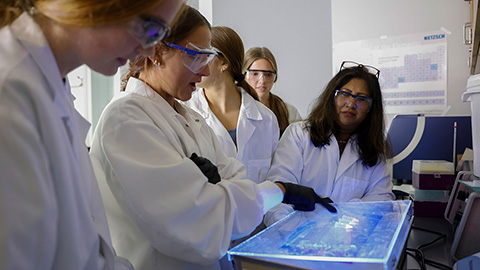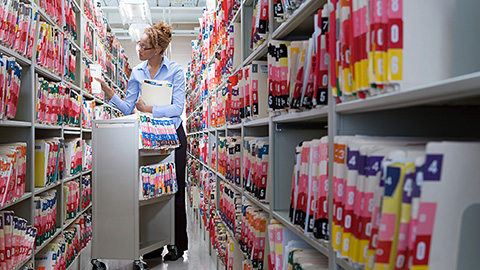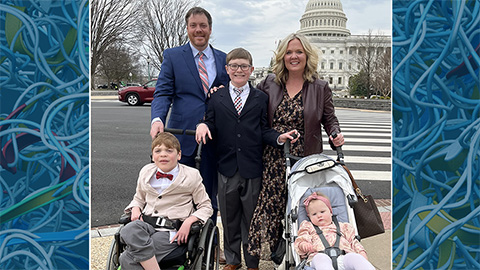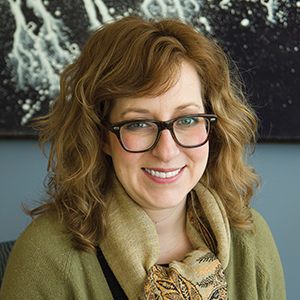Our top 10 articles of 2020
Like everyone else, ASBMB Today staffers kicked off the year with big plans and then got kicked in the gut by COVID-19 and other things. Still, we marched on and managed to achieve most of what we set out to do, including publishing daily. This is something I had wanted to do for some time, because I thought it was ridiculous that a magazine called ASBMB Today was published monthly. I underestimated how hard it would be to produce enough stories, though, with such a small team, which got smaller as the year progressed.
Aside from the workload, another thing about publishing daily that I misjudged was how quickly our important, hard-earned stories would get buried by new articles. It's hard to justify promoting the heck out of a terrific feature about something interesting but not pressing when there are life-and-death matters at hand. So we let them go.
Today, as we finally kick 2020 out the door, we present 10 of the staff's favorite articles of the year (in no particular order). If you didn't read them when they first came out, maybe now you'll have the emotional bandwidth and the time. We think they're pretty great.
1. Stopping the devil in the dust
I'll start with one of my favorites, which I mentioned in an email to subscribers in July. John Arnst, who worked as a science writer for us for a few years before heading off to the Howard Hughes Medical Institute this fall, wrote such a nice story about Valley fever during the first quarter. His reporting was layered and deep. The timing, though, was unfortunate: A much scarier respiratory infection was staring us in the face by the time we went to press. I recommend that you read Arnst's report about efforts to find a vaccine for this challenging fungal infection. – Angela Hopp, executive editor
2. Pivoting from carnivorous plants to COVID-19
3. Researchers retool genomics labs to provide COVID-19 testing
These stories gave me so much hope, faith and gratitude for the scientists whose work is carrying us through the COVID-19 pandemic. National leadership triggered fear and despair for me, and being able to read about this work and bravery has been incredibly grounding and comforting during 2020. – Allison Frick, multimedia and social media manager
4. “The magic isn’t the squid … The magic is the protein.”
This story, the last non-COVID-related story I wrote for a good four or five months, combines a few of my favorite things: photophysics, complex signal transduction pathways, exotic critters and the ocean. Illustrating it was a pleasure, and reporting it felt like taking a scuba vacation. Now, rereading it makes me nostalgic for my own life just a year ago. – Laurel Oldach, science writer
5. Research on a budget
6. What would Julia Child do? The importance of maintaining causal connections in online labs
I like these two essays because the offer actual, practical how-to advice for professors, what we used to call “news you can use.” – Comfort Dorn, managing editor
7. A new city, a new job and a global pandemic
This essay by careers columnist Elizabeth Stivison illustrates that the pandemic caught all of us in the middle of our own private dramas, and, to some extent, froze them in place. – Laurel Oldach, science writer
8. Use the mic!
This sentence by Rajini Rao: “When you decline to use the microphone, you are projecting your ableism, not your voice, by assuming that able-bodied people are the norm.” – Allison Frick, multimedia and social media manager
9. Being Black in the ivory tower
This essay by Kayunta Johnson–Winters was selected by multiple staffers. In it, she writes about her experiences with the criminal justice system and with academia.
10. Milk through the millennia
This feature about what lipids found in ancient pottery can tell us about lactase persistence was John Arnst's last for ASBMB Today. When he submitted it, I wasn't sure if he was serious about the lead or not, but, even if it was a joke, I thought it captured the collective American mood at the time. He wrote, "Sixty-six million years ago, primitive animals with mammary glands managed to ride out a mass extinction event, with the eventual result that today humans have to pay bills and ponder our own mortality. However, we are the only mammals that can digest lactose into adulthood and blunt these pains with industrial quantities of cheddar cheese, so the verdict is out on whether this situation is a net positive or negative." – Angela Hopp, executive editor
Enjoy reading ASBMB Today?
Become a member to receive the print edition four times a year and the digital edition monthly.
Learn moreGet the latest from ASBMB Today
Enter your email address, and we’ll send you a weekly email with recent articles, interviews and more.
Latest in Opinions
Opinions highlights or most popular articles

Debugging my code and teaching with ChatGPT
AI tools like ChatGPT have changed the way an assistant professor teaches and does research. But, he asserts that real growth still comes from struggle, and educators must help students use AI wisely — as scaffolds, not shortcuts.

AI in the lab: The power of smarter questions
An assistant professor discusses AI's evolution from a buzzword to a trusted research partner. It helps streamline reviews, troubleshoot code, save time and spark ideas, but its success relies on combining AI with expertise and critical thinking.

How AlphaFold transformed my classroom into a research lab
A high school science teacher reflects on how AI-integrated technologies help her students ponder realistic research questions with hands-on learning.

Writing with AI turns chaos into clarity
Associate professor shares how generative AI, used as a creative whiteboard, helps scientists refine ideas, structure complexity and sharpen clarity — transforming the messy process of discovery into compelling science writing.

Teaching AI to listen
A computational medicine graduate student reflects on building natural language processing tools that extract meaning from messy clinical notes — transforming how we identify genetic risk while redefining what it means to listen in science.

What’s in a diagnosis?
When Jessica Foglio’s son Ben was first diagnosed with cerebral palsy, the label didn’t feel right. Whole exome sequencing revealed a rare disorder called Salla disease. Now Jessica is building community and driving research for answers.

